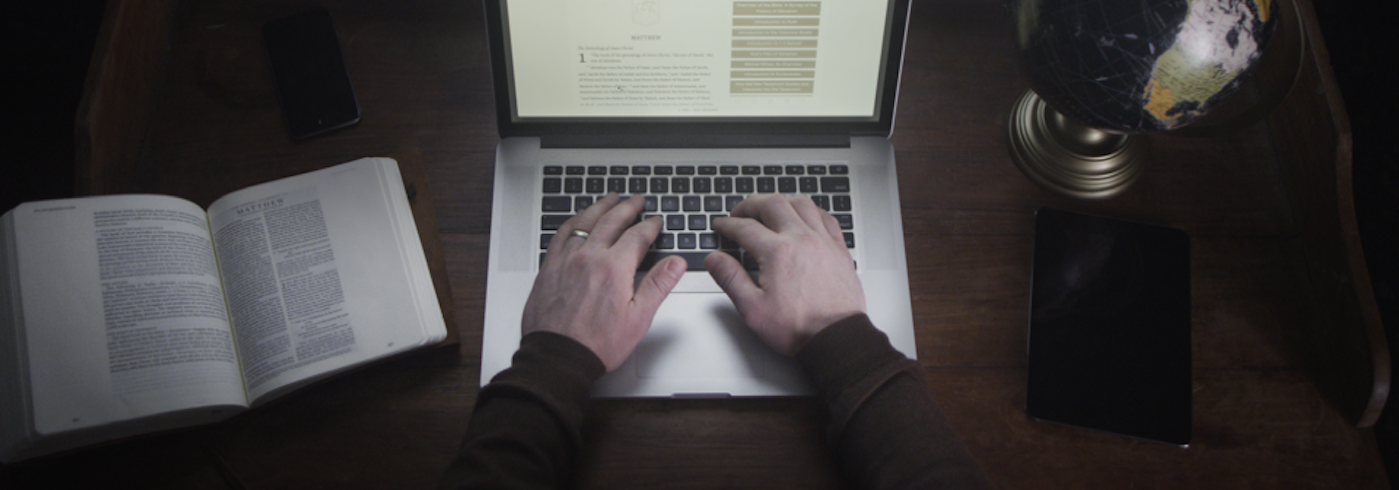ESV Reader’s Bible
ESV Reader’s Bible (Wheaton, IL: Crossway, 2014).
This year, my church is promoting a Bible reading and prayer initiative called "20•15 in 2015." Every day, we read the Bible for 20 minutes then engage in prayer and solitude for 15 minutes. (These are minimums.) The congregation is using the One Year Bible reading plan on Bible.com, which includes a daily reading from the Old Testament, New Testament, Psalms, and Proverbs. Rather than using this plan, I decided to read the Bible straight through instead.
As a Christian minister, I have read the Bible cover to cover several times. It is the tool of my trade, so to speak, and I am familiar with its contents. So, as I prepared to read it again, I determined to find a translation and format that was not familiar to me. The old proverb says that familiarity breeds contempt. In reality, familiarity breeds complacency. We become so accustomed to seeing things a certain way that we fail to notice how much we've overlooked or misinterpreted.
The choice of a different translation was easy enough. My go-to translation is the New International Version. It is a functionally equivalent and gender inclusive translation. In its place, I decided to use the English Standard Version, which is a formally equivalent translation.
The choice of a different format was more difficult. The vast majority of Bibles are printed in a two-column format. Most of them include chapter and verse numbers, as well as subtitles, cross-references, and footnotes. Study Bibles include even more information, such as extensive comments, maps, and diagrams. For example, compare how Acts 2 appears in my ESV Bible, Classic Thinline Edition and my ESV Study Bible.
At some point in 2014, I had heard about Adam Lewis Greene's Bibliotheca project, which was printing the Bible in a single-column format without chapter and verse numbers, subtitles, cross-references, or footnotes. In other words, it was printing a Bible that looked like a normal book. Unfortunately, Greene was using a modified version of the American Standard Version, whose English translations, while literal, can be archaic. As much as I admired what Greene was trying to do, I wasn't interested in reading the ASV.
Imagine my delight, then, when I came across the ESV Reader's Bible. It presents that translation in a single-column format, 9-point font, which is very readable. It has no verse numbers, subtitles, cross-references, or footnotes. (The textual notes prior to John 7:53-8:11 and Mark 16:9-20, which state that the earliest New Testament manuscripts do not contain these passages, are exceptions.) Chapter numbers are printed unobtrusively in the margin in a different color, except for the Psalms, where the psalm number appears directly above each psalm. The page header includes the title, chapter, and verses appearing on the page below it, but these also are unobtrusive. Consider how the ESV Reader's Bible presents Acts 2.
With the ESV Reader's Bible in hand, I began my 20-minutes-a-day Bible reading plan. What I have discovered surprised me. How the Bible is presented on the page radically changes the way a reader experiences its message. At least, it radically changed my experience. It did so in two ways.
First, this format increased my focus on what the Bible was saying. While I will continue to use a two-column study Bible in my research for sermons, devotionals, and articles, I will never again use one for personal devotions. Its presentation of God's Word is simply too cluttered. When I used that format for devotional purposes, I found my eyes skipping to another column, scanning the page for footnotes, and looking ahead to when the section or chapter ended. With the ESV Reader's Bible format, I found myself reading without distraction. This allowed me to notice nuances in the text that, for whatever reason, had escaped my attention previously.
Second, this format increased my enjoyment of reading the Bible. In my previous attempts to read the Bible through entirely, I often found myself wondering how long it was going to take me to finish the daily reading. Sometimes, reading the Bible felt like a chore that had to be endured. It dragged on and on until I reached the end of that day's prescribed reading. (And this wasn't just in books like Leviticus and Numbers!) This year, I decided simply to read for 20 minutes without a set chapter to start or finish with. That decision, combined with the new format, has made reading a delight again. Why is it that we can read novels for hours at a time but find minutes spent in the Bible so difficult? If my experience is any guide, it's partially because of the format of the Bible we're reading. When the Bible is printed as a normal book, it's easier to read as a normal book - and easier to enjoy.
Proverbs 25:11 says, "A word fitly spoken is like apples of gold in settings of silver." When it is printed, the Word of God is the golden apple that deserves a silver setting. Bible publishers would do well to keep this in mind as they print their translations. Yes, translation philosophy matters most. And yes, the monetary cost of the book must be factored in, lest reader avoid buying a Bible because of its prohibitive cost. But how the Bible looks - its aesthetic appeal - matters too. If the Bible is beautifully presented, the beauty of its message can be better understood and applied.
Read it on TruTone Leather| Hardcover | Kindle
Influence Magazine & The Healthy Church Network
© 2026 Assemblies of God

